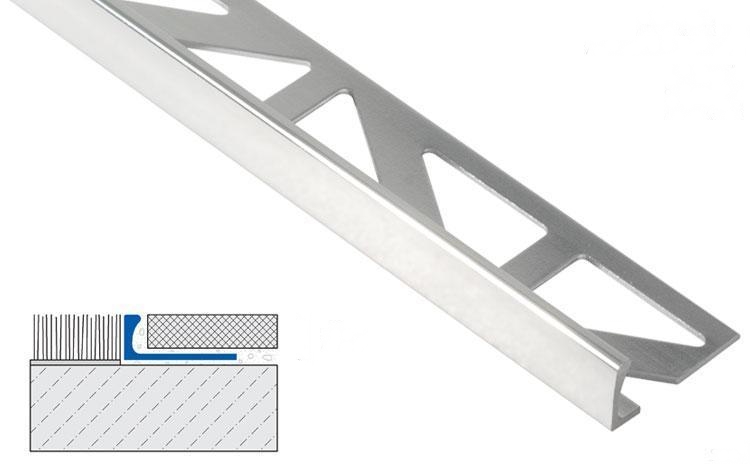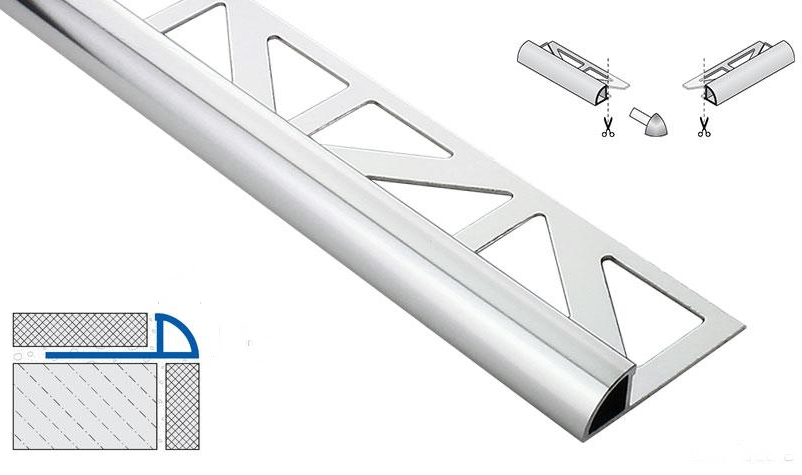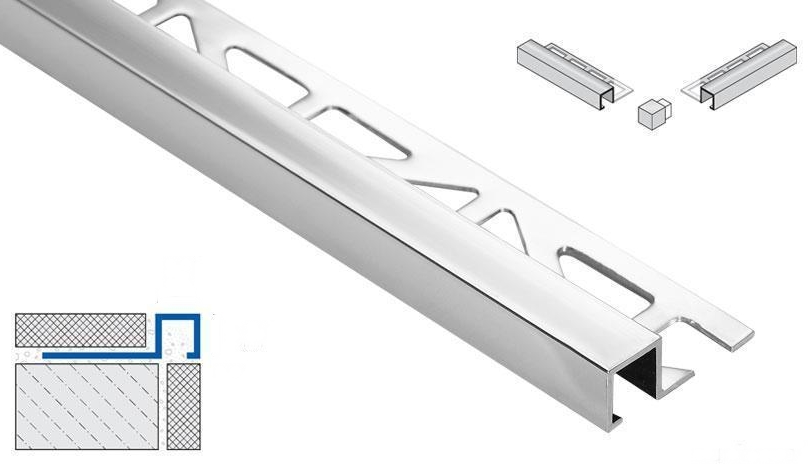Metal Tile Trims: Edge Protection and Finishing for Tiles
21st Jun 2022
Metal Tile Trims: Edge Protection and Finishing for Tiles
Metal tile trims, also known as tile edge trims, are essential finishing and edge-protection profiles for ceramic and stone tile installations. Available in a wide range of shapes, sizes, finishes, and patterns, these trims provide a durable and stylish transition between tiled and untiled surfaces.
Commonly made from aluminium, stainless steel, and brass, metal tile trims are frequently used in medium to high-end residential and commercial projects due to their strength and visual appeal.
At National Tile Trims, we stock the most popular tile edging profiles, making it easy for professionals and DIYers alike to achieve a clean, professional finish on any tiling job.
"L" Shape Tile Trim (Straight Edge Profile)
The L-shaped profile is ideal for creating clean, minimal transitions between tile and other surfaces such as carpet or wood. This tile trim offers both edge protection and surface definition, making it a practical and aesthetic solution. It features a discreet, minimal reveal that is perfect for contemporary and elegant floor transitions.

Quadrant Tile Trim
The Quadrant or quarter-circle profile is a stylish and functional trim designed for external wall corners. With its smooth, rounded surface, it creates soft decorative accents and enhances the visual continuity of tiled corners.

Square Edge Tile Trim
The Square edge profile—also referred to as box edge tile trim—features a bold, squared reveal that is ideal for both wall and floor transitions. Its geometric look makes it perfect for modern interior design, creating crisp, decorative edges and contrasts in tiled surfaces.

Choosing the Right Material
Stainless steel is highly recommended for public and high traffic areas due to mechanical strength and chemical resistance. Stainless Steel profiles should be chosen where high levels of hygiene are sought, such as food processing industries, breweries, dairies and hospitals.
Aluminium has a wide variety of applications and is sought after for its range of profiles and complex shapes. Aluminium is also lightweight, ductile and easy to cut and use. It also provides a medium degree of mechanical strength. Aluminium has many variants of finish, including bright and matt colour anodising.
Brass is an elegant material and is highly regarded by architects and interior designers. It is mechanically very sturdy. It is best suited to indoor application and has a warm gold colour.
Tile Trim Material Comparison Chart
| Material | Best For | Strength | Finish Options | Recommended Use |
|---|---|---|---|---|
| Stainless Steel | High-traffic areas, hygiene-critical environments | ★★★★★ | Brushed, polished | Hospitals, food processing, commercial spaces |
| Aluminium | General residential and commercial use | ★★★☆☆ | Bright anodised, matt anodised, powder-coated | Walls, floors, kitchens, bathrooms |
| Brass | Luxury interiors, decorative finishes | ★★★★☆ | Natural polished brass | Indoor use, feature walls, designer finishes |
How to Choose the Right Profile Height
When selecting a tile trim profile height, always add 1.5–2mm to the thickness of your tile. This allows enough space for the mortar layer beneath the tile to bond securely with the trim.
Handy Hint: Grouting Caution
Always remove excess grout immediately after application. Fresh cement residue can cause discoloration and oxidation marks, especially on metal trims. Once oxidation appears, it is nearly impossible to remove without damaging the trim finish.
